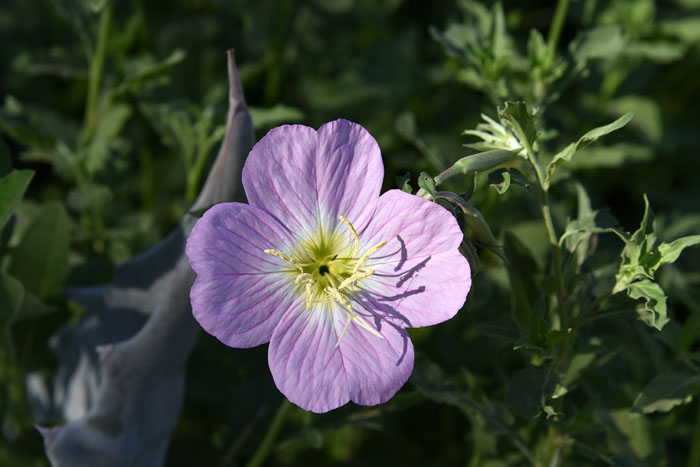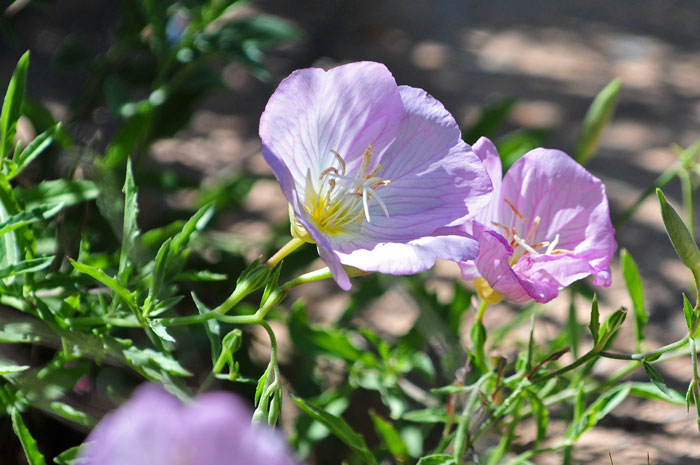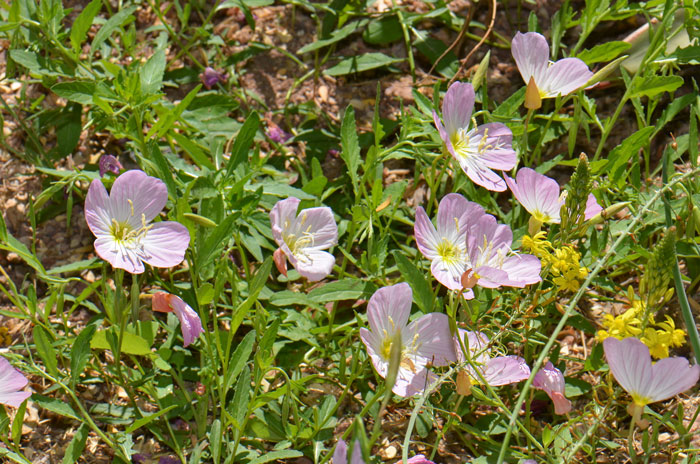Oenothera speciosa, Mexican Evening Primrose



Scientific Name: Oenothera speciosa
Common Name: Mexican Evening Primrose
Also Called: Buttercups, Pink Buttercups, Pink Evening Primrose, Pink Ladies, Pinkladies, Showy Evening Primrose, Showy Eveningprimrose, Showy Primrose (Spanish: Amapola del Campo)
Family: Onagraceae, Evening Primrose Family
Synonyms: (Hartmannia speciosa, Oenothera delessertiana, Oenothera speciosa var. childsii)
Status: Native
Duration: Perennial
Size: Up to 20 inches more or less.
Growth Form: Forb/herb, subshrub; rosetted, colonizes in open areas from rhizomes, stems weak, mostly ascending, erect.
Leaves: Green, some red in autumn; oblanceolate to elliptic, margins wavy.
Flower Color: Pink, white fading pink or rose-purple; flowers large, up to 2 inches, showy from upper axils, inflorescence nodding; fruit ribbed, cylindric.
Flowering Season: February to July.
Elevation: Below 1,500 feet.
Habitat Preferences: Disturbed places and cultivated in gardens and later invading yards.
Recorded Range: Mexican Evening Primrose is found in the central, southern and southwestern parts of the United States. It is also native to northern and central Mexico.
In Arizona it is found in the central and southern parts of the state but is most abundant as a cultivated species and escapee in the Phoenix area.
North America & US County Distribution Map for Oenothera speciosa.
U.S. Weed Information: No information available.
Invasive/Noxious Weed Information: No information available.
Wetland Indicator: No information available.
Threatened/Endangered Information: No information available.
The Plant List includes 706 scientific plant names of species rank for the genus Oenothera. Of these 150 are accepted species names.
Comments: Mexican Evening Primrose is a native species that is invasive when cultivated. It is a popular landscape plant as a ground-cover, but hard to control. Flowers last a day and the flowers release a scent at dusk. This species has several benefits to wildlife as the seeds attract birds and small mammals and the flowers provide a source of nectar for native bees. The Native Plant Information Network has an excellent summary of Mexican Evening Primrose.
Also see in Southwest Desert Flora: Tufted Evening Primrose, Oenothera caespitosa; California Suncup, Oenothera californica; Crownleaf Evening Primrose, Oenothera coronopifolia; Velvetweed, Oenothera curtiflora; Dune Evening Primrose, Oenothera deltoides; Hooker's Evening Primrose, Oenothera elata; Large Yellow Desert Primrose, Oenothera primiveris; Rose Evening Primrose, Oenothera rosea; Mexican Evening Primrose, Oenothera speciosa and Scarlet Beeblossom, Oenothera suffrutescens.

